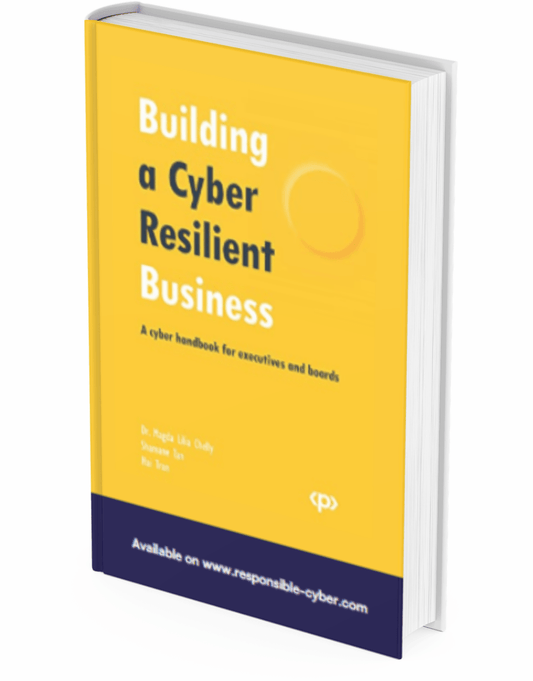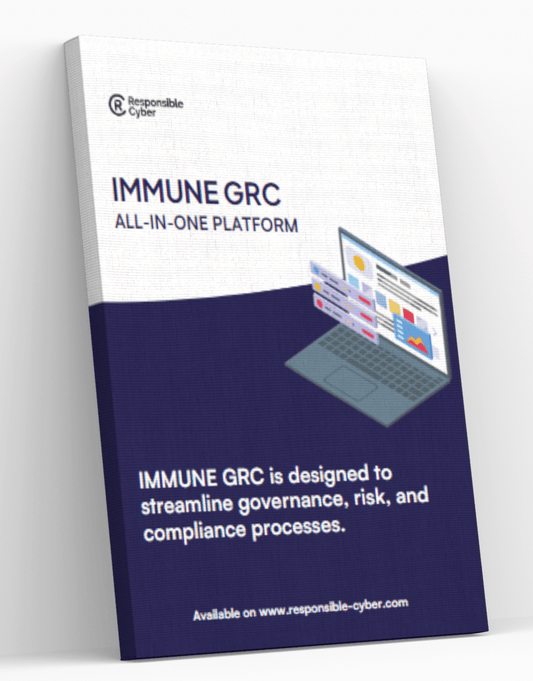The Essential Guide to Cyber Risk Management in 2024

In the rapidly evolving digital landscape, cyber risk management has never been more critical. As businesses increasingly rely on technology, the potential for cyber threats grows exponentially. Cybercriminals are becoming more sophisticated, making it essential for organizations to stay ahead of the curve. This guide provides an in-depth overview of the latest trends and best practices in cyber risk management for 2024, offering actionable advice on how businesses can identify, assess, and mitigate cyber risks effectively.
The State of Cyber Risk in 2024
The cyber threat landscape is constantly changing, driven by technological advancements and evolving tactics of cybercriminals. In 2024, several key trends are shaping the cyber risk environment:
- Increased Frequency of Attacks: The number of cyber attacks continues to rise, with ransomware, phishing, and supply chain attacks becoming more prevalent.
- Evolving Threats: Cyber threats are becoming more sophisticated, with attackers using advanced techniques such as AI-driven attacks and deepfakes to bypass traditional security measures.
- Regulatory Pressure: Governments and regulatory bodies are imposing stricter cybersecurity regulations, requiring businesses to adopt robust cyber risk management practices.
- Remote Work Risks: The shift to remote work has expanded the attack surface, making it harder for organizations to secure their networks and data.
- Supply Chain Vulnerabilities: Third-party vendors and partners pose significant risks, as attackers target these external entities to gain access to larger organizations.
Identifying Cyber Risks
The first step in effective cyber risk management is identifying potential risks. This involves understanding the various types of threats and vulnerabilities that could impact your organization.
Common Cyber Threats
- Malware: Malicious software designed to disrupt, damage, or gain unauthorized access to computer systems.
- Ransomware: A type of malware that encrypts data and demands payment for its release.
- Phishing: Social engineering attacks aimed at tricking individuals into revealing sensitive information.
- Advanced Persistent Threats (APTs): Prolonged and targeted cyber attacks aimed at stealing data or disrupting operations.
- Insider Threats: Threats originating from within the organization, often from disgruntled employees or contractors.
Vulnerability Assessment
Conducting a vulnerability assessment is crucial for identifying weaknesses in your systems and networks. This process involves:
- Asset Inventory: Cataloging all hardware, software, and data assets to understand what needs to be protected.
- Threat Modeling: Identifying potential threats and their attack vectors.
- Vulnerability Scanning: Using automated tools to scan for known vulnerabilities in your systems.
- Penetration Testing: Simulating cyber attacks to identify exploitable vulnerabilities.
Assessing Cyber Risks
Once potential risks have been identified, the next step is to assess their impact and likelihood. This helps prioritize risks and allocate resources effectively.
Risk Assessment Process
- Risk Identification: Documenting all identified risks.
- Risk Analysis: Evaluating the potential impact and likelihood of each risk.
- Risk Evaluation: Prioritizing risks based on their analysis, often using a risk matrix.
Key Factors to Consider
- Business Impact: Assessing the potential financial, operational, and reputational impact of a cyber incident.
- Likelihood: Estimating the probability of a risk materializing based on historical data and threat intelligence.
- Risk Appetite: Understanding the level of risk your organization is willing to accept.
Mitigating Cyber Risks
Effective risk mitigation involves implementing measures to reduce the likelihood and impact of cyber risks. This includes a combination of technical, administrative, and physical controls.
Technical Controls
- Endpoint Security: Implementing antivirus, anti-malware, and endpoint detection and response (EDR) solutions.
- Network Security: Using firewalls, intrusion detection/prevention systems (IDS/IPS), and secure network architectures.
- Encryption: Encrypting sensitive data both at rest and in transit.
- Multi-Factor Authentication (MFA): Requiring multiple forms of authentication to access systems and data.
- Patch Management: Regularly updating software and systems to address known vulnerabilities.
Administrative Controls
- Security Policies: Developing and enforcing comprehensive cybersecurity policies and procedures.
- User Training: Providing regular cybersecurity training to employees to raise awareness of common threats and best practices.
- Access Controls: Implementing role-based access controls (RBAC) to limit access to sensitive information.
- Incident Response Plan: Establishing a formal incident response plan to guide the organization in the event of a cyber attack.
Physical Controls
- Secure Facilities: Ensuring that physical access to critical systems and data is restricted and monitored.
- Environmental Controls: Protecting data centers and server rooms from environmental hazards such as fire, flood, and temperature extremes.
Best Practices for Cyber Risk Management in 2024
Adopting best practices is essential for staying ahead of cyber threats. Here are some key strategies for effective cyber risk management in 2024:
Implement a Cybersecurity Framework
Using a recognized cybersecurity framework, such as the NIST Cybersecurity Framework or ISO/IEC 27001, provides a structured approach to managing cyber risks. These frameworks offer guidelines for identifying, assessing, and mitigating risks, as well as for continuous improvement.
Conduct Regular Risk Assessments
Cyber risks are constantly evolving, making it crucial to conduct regular risk assessments. This ensures that your organization remains aware of emerging threats and can adapt its risk management strategies accordingly.
Foster a Security-Aware Culture
Building a culture of cybersecurity awareness is vital for reducing human-related risks. Regular training and awareness programs can help employees recognize and respond to cyber threats effectively.
Leverage Threat Intelligence
Utilizing threat intelligence can provide valuable insights into the latest cyber threats and attack techniques. This information can be used to proactively defend against potential threats and inform risk management decisions.
Develop a Comprehensive Incident Response Plan
A well-defined incident response plan is essential for minimizing the impact of a cyber attack. The plan should outline roles and responsibilities, communication protocols, and steps for containment, eradication, and recovery.
Monitor Third-Party Risks
Third-party vendors and partners can introduce significant cyber risks. Implementing a robust third-party risk management program, including regular assessments and continuous monitoring, can help mitigate these risks.
Invest in Advanced Technologies
Advanced technologies such as AI and machine learning can enhance your cyber risk management capabilities. These technologies can help detect and respond to threats more quickly and accurately than traditional methods.
Ensure Compliance with Regulations
Staying compliant with cybersecurity regulations is critical for avoiding fines and penalties. Regularly review and update your security practices to ensure compliance with relevant laws and standards.
Actionable Advice for Businesses
To effectively manage cyber risks, businesses should take the following actionable steps:
- Conduct a Cyber Risk Assessment: Identify and prioritize your organization's cyber risks through a comprehensive risk assessment.
- Develop a Risk Management Strategy: Create a strategy that includes risk mitigation measures, policies, and procedures.
- Implement Technical Controls: Deploy technical solutions such as firewalls, encryption, and endpoint security to protect your systems and data.
- Train Employees: Provide regular cybersecurity training to employees to raise awareness and reduce the risk of human error.
- Monitor and Review: Continuously monitor your security posture and conduct regular reviews to ensure your risk management strategies remain effective.
Conclusion
Cyber risk management is an ongoing process that requires vigilance, adaptability, and a proactive approach. In 2024, businesses must stay ahead of the evolving cyber threat landscape by adopting the latest trends and best practices in cybersecurity. By identifying, assessing, and mitigating cyber risks effectively, organizations can protect their digital assets, maintain customer trust, and ensure business continuity.
The strategies outlined in this guide provide a comprehensive framework for managing cyber risks in 2024. By following these recommendations and investing in advanced technologies, businesses can enhance their cybersecurity posture and navigate the complex threat landscape with confidence.
Check other related articles:
- Cyber Security & Third-Party Risk Management: A Step-by-Step Guide
- Addressing Universal Business Challenges: Cybersecurity, Supply Chain, and Regulatory Compliance
- Lessons Learned from the Worst Third-Party Cybersecurity Incidents of 2023
- The Growing Threat of Cyberattacks in Higher Education
- What is Cyber Readiness?
- Unpacking the Cisco Cybersecurity Readiness Report: Implications for Third-Party Risk Management and Supply Chain Resilience
- The Importance of Cyber Insurance for Healthcare Organizations
- 7 Hidden Supplier Challenges That Could Make or Break Your Business: Unveiling the Truth Behind Supply Chain Performance







